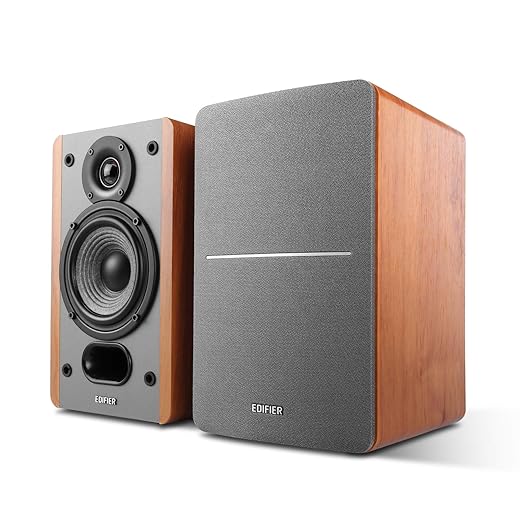










The Ultimate Guide to Pairing Your Smart Speaker with a Voice Assistant
In the age of technology, smart speakers have become a staple in our homes. They not only play your favorite songs but also manage your smart home devices, set reminders, and answer your burning questions. But what’s a smart speaker without a voice assistant to bring it to life? This guide will walk you through the intricacies of pairing your smart speaker with a voice assistant, enhancing your experience and making your life a little easier.
Understanding Smart Speakers and Voice Assistants
Before diving into the pairing process, let’s clarify what smart speakers and voice assistants are. Think of a smart speaker as a modern-day genie, waiting to fulfill your wishes—if only you know how to ask. A voice assistant, on the other hand, is the magical voice emerging from that genie, interpreting your commands and providing the responses you seek.
The most common smart speakers include Amazon Echo (with Alexa), Google Nest (with Google Assistant), and Apple HomePod (with Siri). Depending on which ecosystem you prefer, your choice of smart speaker and voice assistant may vary.
Choosing the Right Combination
Choosing the right combination of smart speaker and voice assistant is crucial. Are you an Amazon Prime member? The Echo series with Alexa might be your best bet. Prefer Google’s ecosystem, with its vast array of services? The Google Nest is calling your name. If you’re deep into Apple’s world, the HomePod is your go-to.
It’s like choosing a dance partner; you want someone who complements your style. Once you’ve chosen your combination, it’s time to dive into the pairing process.
How to Pair Your Smart Speaker with a Voice Assistant
Pairing your smart speaker with a voice assistant can sometimes feel like a puzzle. But fear not! Just follow these straightforward steps:
1. **Set Up Your Smart Speaker:**
– Unbox your smart speaker and plug it in.
– Download the corresponding app (Amazon Alexa, Google Home, or Apple Home).
– Follow the on-screen instructions to connect your speaker to Wi-Fi.
2. **Connect to Your Voice Assistant:**
– Open the app you just downloaded.
– If you’re using Alexa, tap “Devices,” then “Add Device.” For Google, tap the “+” icon and select “Set up device.” For Apple, open the Home app and tap “Add Accessory.”
– Follow the prompts to link your voice assistant to your smart speaker.
3. **Customize Your Settings:**
– Once connected, you can personalize your voice assistant settings. Choose your preferred voice, set up routines, and link your music services.
4. **Test the Connection:**
– Say, “Hey Google,” “Alexa,” or “Hey Siri,” followed by a command. For example, “Play my morning playlist.” If it works seamlessly, congratulations—you’re all set!
Common Challenges and Solutions
Even the best systems can hit a snag. Here are some common challenges you might face when pairing your smart speaker with a voice assistant, along with their solutions:
– **Wi-Fi Connectivity Issues:** If your speaker isn’t connecting, ensure it’s within range of your router. Sometimes, a simple reboot can do wonders.
– **Voice Assistant Not Responding:** Check if the microphone is muted. Many smart speakers have a physical button that turns off the microphone.
– **App Compatibility Problems:** Always ensure your app is up-to-date. An outdated app can hinder your pairing experience.
Enhancing Your Smart Home Experience
Once you’ve successfully paired your smart speaker with a voice assistant, the fun doesn’t stop there! You can integrate various smart home devices like lights, thermostats, and security cameras. Imagine dimming your lights and playing your favorite song with just one command—pure magic!
Moreover, explore the skills or actions available for your voice assistant. For instance, Alexa has thousands of skills that can play trivia games, manage your calendar, or even order pizza. It’s like opening a treasure chest of possibilities!
Conclusion
Pairing your smart speaker with a voice assistant transforms your home into a hub of convenience and entertainment. By understanding your options, following the pairing process, and troubleshooting common issues, you can create a seamless experience that fits your lifestyle. So go ahead, unleash the power of your smart speaker and voice assistant duo, and enjoy the future of home automation!
FAQs
1. Can I use multiple voice assistants with one smart speaker?
No, most smart speakers are designed to work with a specific voice assistant. For example, Amazon Echo works with Alexa, while Google Nest is compatible with Google Assistant.
2. How can I improve the accuracy of my voice assistant?
To enhance accuracy, speak clearly and ensure that your smart speaker is in a noise-free environment. Additionally, regularly update your assistant’s software for optimal performance.
3. Is it possible to change the default voice assistant on my smart speaker?
In most cases, you cannot change the default voice assistant. For instance, an Amazon Echo will always use Alexa. However, you can switch to different smart speakers that support other voice assistants if you prefer a different one.
